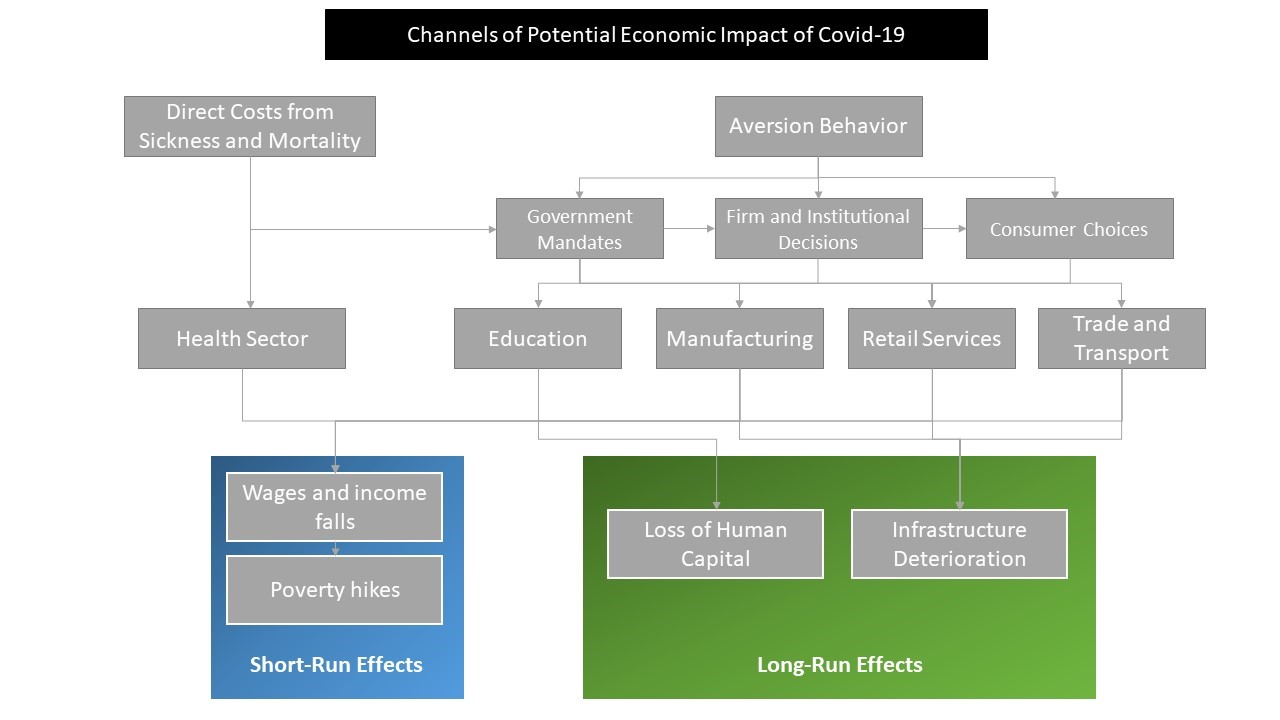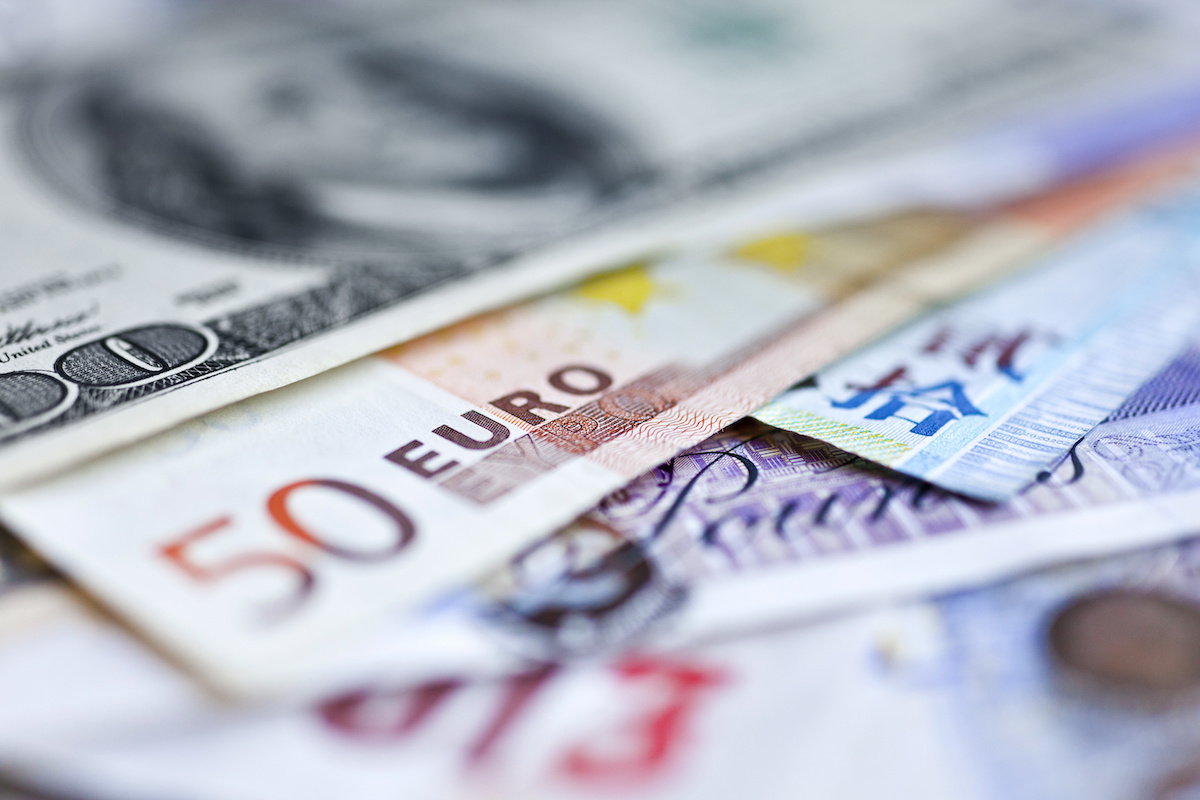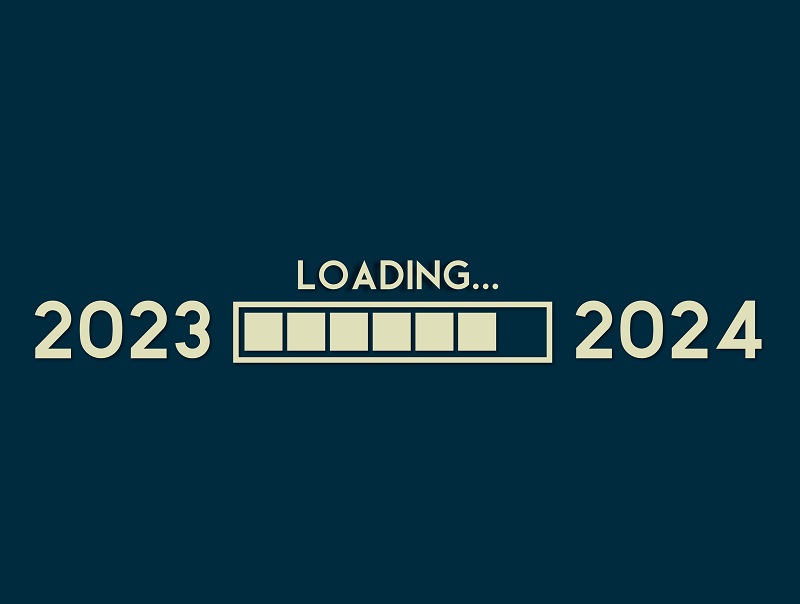This blog post also appeared in Richard Baldwin and Beatrice Weder di Mauro’s book Mitigating the COVID Economic Crisis: Act Fast and Do Whatever It Takes, published by CEPR Press.
The world is living its worst scare since the global financial crisis (GFC) in the form of COVID-19, now officially declared a pandemic. The virus that causes this disease, like the flu, affects the respiratory system, but it is potentially ten times as lethal. And, while the mortality rates are significantly lower than the South Asia Respiratory Syndrome (SARS), or the Middle East Respiratory Syndrome (MERS), the high contagiousness of COVID-19 has already resulted in thousands of deaths in China, and a rapidly rising tally in South Korea, Italy, the US, and more than 100 countries. Will the socioeconomic toll be as large as that experienced during the GFC? In both the GFC and the current health crisis it is apparent that the markets will not produce a solution, and that aggressive policy intervention and globally coordinated national action is needed to slow, and ultimately stop, the spread of the epidemic and to minimize the size and time length of its economic fallout.
The parallels to the global financial crisis are telling:
Ubiquity. It is believed that carriers of the virus can infect others even when they are asymptomatic, which makes comprehensive early detection virtually impossible because this fraction of infected population—no matter how small—can exist undetected among the healthy. This is of course similar to the subprime mortgages which were imbedded into securitized mortgage vehicles along with higher quality mortgages. While subprime mortgages were a small percent of the total (10-12 percent), it was virtually impossible to locate them when they started to default. This, together with efforts to selectively “quarantine”—i.e., bail out some but sacrifice other financial institutions—led to a freezing-up of the banking and credit channels, and the great recession of 2008-09. The efforts to contain COVID-19 have frozen many global supply channels. The fear of contagion is causing an unprecedented retrenchment in consumer demand. The two effects combined are near the point of causing a global recession.
Underestimation, denial, and unpreparedness. In both these crises policymakers initially played down the gravity of the problem. Analysts were also blindsided. In 2007 and early 2008, rating agencies continued to attach low risk to collateralized debt obligations (CDO) and collateralized mortgage obligations. Analysts relied on historical models of real estate price behavior and saw a real estate downturn as improbable. In the early stages of COVID-19, the Chinese government deliberately hid the high degree of contagiousness and even silenced those who voiced strong concern. In the US, there was a proactive effort to minimize the gravity of the health crisis by the Trump Administration, and a very late start in testing and containment efforts. The lack of proper assessment of the threat and the inability to identify positive cases early on is at the root of the economic fallout. In order to avoid crushing the health system, social distancing has become the best (and perhaps only) way to slow down the rate of contagion and social distancing is at the root of the large-scale retrenchment of consumer demand that we are witnessing. Meanwhile, market analysts looked at the experiences of SARS, MERS, H1N1, and other infectious diseases to infer future economic and market behavior, seemingly underestimating how much more integrated the world has become, as well as the gained prominence of China in the world economy. The result was that in both crises the institutional and regulatory frameworks, as well as the investment community, were unprepared for the dimension of the crises that ultimately ensued.
The local became global. The global financial crisis was initially perceived as a problem of the subprime mortgage segment in the US real estate market; yet, in a few months it engulfed the global banking and financial sector causing a degree of economic and social damage not seen since the great depression of 1929. Likewise, COVID-19 was initially seen as Chinese or, at worst, as an Asian problem. Like SARS and MERS, it was widely believed that it would remain regionally contained. However, with the Chinese economy getting to represent one third of global GDP, and its growing role in the high-tech industry, disruptions in manufacturing became evident even before the virus began to spread much outside of China. As the infection appeared in other countries, the consumer started to fear contagion.
What lies ahead
It is apparent that the current COVID-19 epidemic, like the GFC, is exhibiting the dark side of globalization. It will first and foremost exhibit the deficiencies and strengths of national health systems. For example, one of the reasons why the virus may spread faster in the US than in other countries is that the law does not require employers to pay for sick leave, added to the estimated 15-20 percent of the population who is uninsured or underinsured for medical benefits. These individuals are less likely to seek testing and medical treatment. It will also test the potential of the digital society, as at least for some time many may be forced to work remotely. The most important question is what the ultimate human and economic cost of the current crisis will be. China has managed to significantly slow the rate of contagion but at the cost of an economic recession. It remains to be seen if the epidemic resurges when containment restrictions are lifted. Will the current and coming economic slump in the US and the rest of the world be as deep as in the aftermath of the GFC?
The degree and duration of consumer risk aversion will depend on the behavior of the virus itself, the availability of effective antiviral treatment, and the wide availability of a vaccine. Will the virus slow down when the weather in the northern hemisphere warms up, as has been the case with the other coronavirus? Will it become an incremental worry to our seasonal respiratory ailments? Will it mutate? There appears to be some negative correlation between temperatures in the infected geographical locations and speed of spread of the infection. But there is no certainty as this is a new virus and the world outside of China is still in the early stages of the pandemic. A vaccine is expected in about a year. Treatments may come sooner. From what is known about the virus, it is reasonable to assume that in a 12-18 months the world may have a medical answer to COVID-19. However, given the speed of contagion, the time horizon may as well be an eternity because at the current pace, the pandemic will overwhelm many national health systems and cause formidable economic and human damage. It could also trigger a sequence of self-reinforcing negative dynamics that could outlast the epidemic. The weak link could be the global corporate credit markets. The last decade of low interest rates has led to a spree of debt issuance by corporations in China, the US, and Europe. The IMF has concluded that a downturn half as large as in the GFC would result in US$19 trillion of corporate debt for which revenues would not cover their interest expenses. This could in turn threaten the health of the global banking system, extending the duration of the economic slump. President Trump recently declared that “this is not a financial crisis.” His speechwriters left out the word “yet.”
In order to avoid extreme scenarios, like the GFC, authorities need to act swiftly in the following fronts:
-
Management of the crisis: testing, containment and treatments are the top priorities in the near term. Here, due to a late start, the US has much to catch up, with important lessons for successful containment efforts in China, Singapore, Israel and South Korea
-
Easing monetary policy helps the home refinancing market but will not get frightened consumer out of their houses and into the stores. Additionally, given the low level of rates, the power of this tool is limited. However, asset purchases and credit facilities from the Fed to the banking and corporate sector could help ease the effects of an eventual corporate cash crunch, and worsening capital ratios. It is encouraging to see that the Fed has rolled out some of this in the last few days.
-
Targeted fiscal policy is likely to be more effective. The Trump Administration has announced federal funds for sick people to stay home and for their caregivers, and an extension of the tax-filing deadline. Also, the Administration is proposing to make available an additional $50 billion in low- cost loans for small enterprises, as well as $200 billion of undetailed liquidity into the economy, pending congressional approval. These are good steps, but more could be done to help those most vulnerable. Examples would be a temporary suspension of the payroll tax, an extension of unemployment benefits (even for those ineligible), and free medical coverage for those treated with the virus. Free medicine and baby-sitting vouchers are other examples. While many of these measures have been included in the coronavirus relief package agreed with the US Congress, they require a quick and efficient implementation. This is also an opportunity to enact adequate reforms to health systems to ensure the provision of coverage for all who need it and require employers to pay salaries during sick leave. The government should be ready to provide support while legislation is approved.
In sum, it is likely that the impact of the current COVID-19 crisis is more short-lived than the effects of the GFC. However, there is a non-negligible risk that this crisis could degenerate into something worse. We have discovered greater vulnerability than expected to bio risk. And people know that there will be other viruses in the future, and there are unknown risks due to climate change. How long will fear from the current epidemic last will depend on medical science, but also on people’s perception of having credible and timely information, adequate prevention, detection and containment policies, and effective management of resources and needs. The world is living through “war time” conditions and people need to know their government has their back.
Disclaimer
CGD blog posts reflect the views of the authors, drawing on prior research and experience in their areas of expertise. CGD is a nonpartisan, independent organization and does not take institutional positions.






